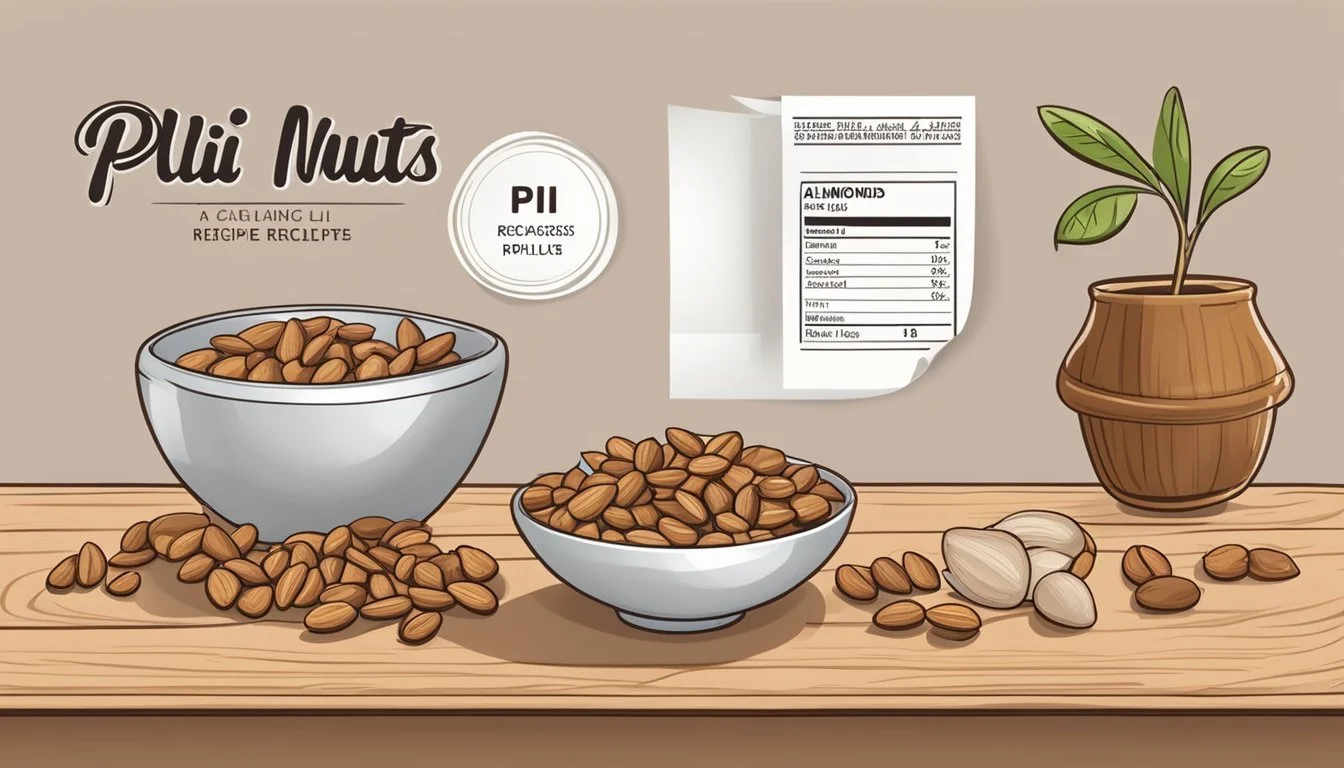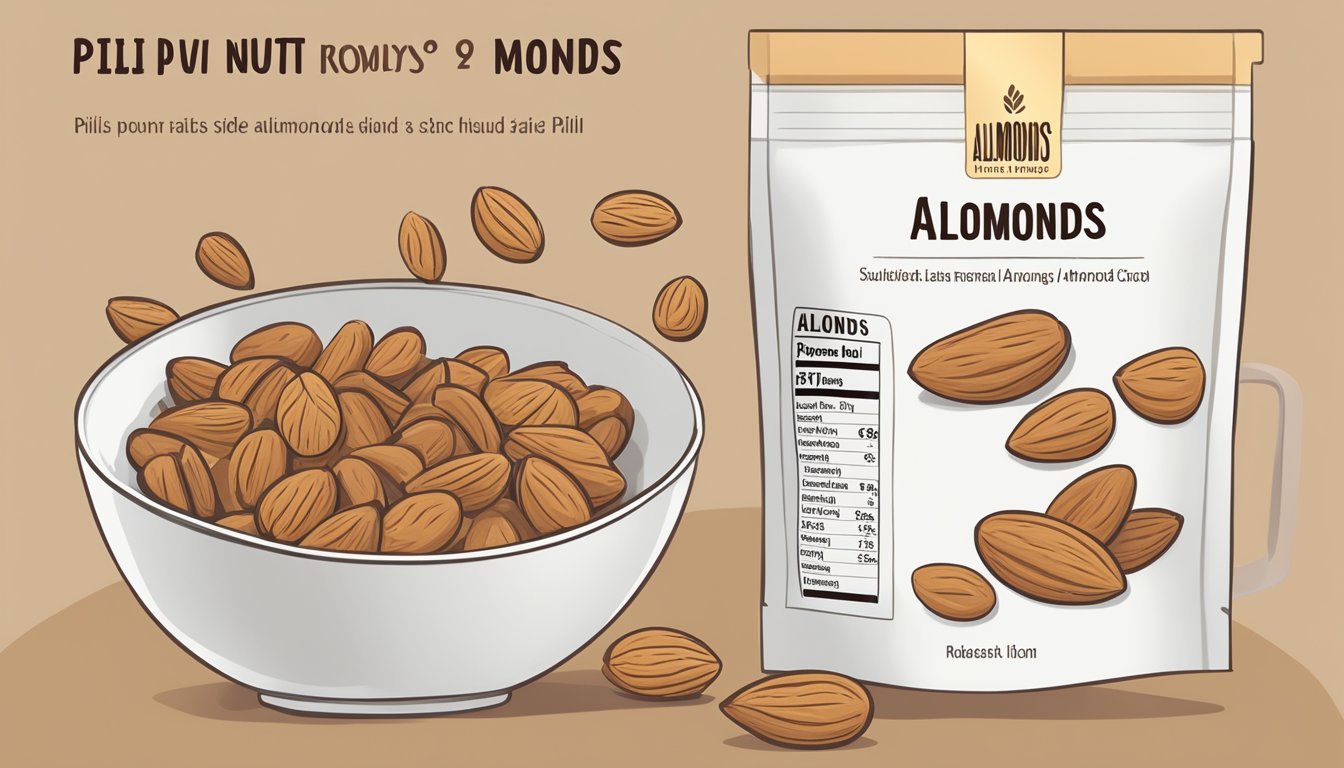How to Substitute Pili Nuts for Almonds
A Simple Guide for Bakers
Substituting one type of nut for another in recipes often hinges on understanding the texture, flavor, and nutritional content of each kind. Pili nuts, while less common than almonds, present a unique opportunity for culinary exploration and dietary variation. They boast a creamy texture and a rich, buttery flavor that can enhance both sweet and savory dishes. For those looking to explore alternatives to almonds, whether due to dietary restrictions, curiosity, or simply for a change of pace, pili nuts can serve as a suitable substitute.
Almonds are a staple in many pantries and a frequent ingredient in a multitude of recipes. They are easily accessible and known for their versatility, health benefits, and a mild flavor that pairs well with a plethora of food items. However, for those interested in a lower carbohydrate option or a nut that is less sweet, pili nuts emerge as an advantageous choice. With fewer carbs and sugars than almonds, pili nuts also cater to specific dietary regimens such as keto, adding to their appeal as a suitable replacement.
When substituting pili nuts for almonds, it's important to consider both the texture and flavor they will bring to the dish. The buttery profile of pili nuts can enrich the taste palette, and they can be used in similar quantities as almonds, whether the nuts are whole, slivered, or ground. The process of substitution is straightforward, often requiring a simple one-to-one ratio, making pili nuts an appealing alternative for cooks and bakers looking to experiment with different nut varieties.
Nutritional Comparison
When substituting Pili nuts for almonds, one should consider the nutritional profile of each nut, including mineral and vitamin content, caloric values, and fat composition.
Mineral Content
Almonds are a better source of Calcium, Copper, and Potassium:
Calcium: Essential for bone health and enzymatic activity.
Copper: Important for iron metabolism and nervous system function.
Potassium: Regulates fluid balance and nerve signals.
In contrast, Pili nuts excel in Phosphorus, Magnesium, Manganese, and are a notable source of Selenium, a rare but essential mineral that plays a key role in thyroid function and antioxidant defense.
Vitamin Levels
Almonds have a higher content of Vitamin E, which acts as an antioxidant and is vital for skin and immune health. They also provide more Vitamin B2 and Vitamin B3, which are important for energy production and DNA repair.
Pili nuts, however, contain more Vitamin B1, essential for glucose metabolism. Both nuts supply essential nutrients that aid in maintaining overall health but vary in vitamin concentrations, making them unique in their contributions to the diet.
Caloric Values
A serving of Pili nuts generally contains more calories compared to Almonds:
Almonds: Approximately 162 calories per ounce
Pili nuts: About 201 calories per ounce
Considering caloric intake is crucial for weight management, which is pivotal in preventing heart disease.
Fat Composition
The fat profile of these nuts is noteworthy. Both contain heart-healthy monounsaturated fats and polyunsaturated fats. However, Pili nuts contain a significantly higher amount of saturated fat, which should be consumed in moderation as it can influence cholesterol levels.
Almonds are known for their balanced fat composition, with a mix of monounsaturated and polyunsaturated fats, with minimal saturated fats and no cholesterol. This makes them often recommended for heart health.
It's important to note that while Pili nuts have higher saturated fat, they don’t contain trans fats, which are associated with a higher risk of heart disease. Moderation is key in dietary choices to maintain optimal cholesterol levels and support heart health.
Taste and Texture Profile
When substituting Pili nuts for almonds, understanding the distinctive taste and texture profiles of each nut is crucial for culinary success. This comparison will guide cooks through the nuances of raw and roasted Pili nuts and their behavior in various recipes.
Raw Nut Experience
Raw Pili nuts are larger in size compared to almonds and are known for their rich, buttery flavor. They have a soft, almost creamy texture, which contrasts with the more fibrous and firmer bite of a raw almond. When Pili nuts replace almonds in a dish, it’s important to consider their softer texture, especially in dishes where the firmness of almonds provides a specific mouthfeel.
Roasted Variations
Roasting both Pili nuts and almonds amplifies their flavors and impacts their textures. Roasted Pili nuts maintain a buttery flavor, but with a slight toasty edge, while their texture becomes slightly crunchier. In contrast, almonds develop a more intense nuttiness and a pronounced crunch upon roasting. Chefs should note that Pili nuts take less time to roast due to their high oil content and should be monitored closely to prevent burning.
Incorporation in Recipes
Incorporating Pili nuts into recipes as a substitute for almonds requires consideration of their flavor and moisture content. Pili nuts can complement baked goods with their rich taste, and they pair well with both sweet and savory flavors. However, due to their size and oiliness, adjustments may be needed in recipes to achieve the desired result. Finely chopping or grinding Pili nuts can help mimic the texture of almonds, and using salted or unsalted varieties can be chosen based on the recipe's flavor profile.
Substitution Guidelines
When substituting Pili nuts for almonds in a recipe, one must consider the measurements, preparation adjustments, and cooking time to ensure a successful outcome. Pili nuts are richer in fats and have a slightly different density compared to almonds, affecting both volume and weight equivalents.
Measuring Equivalents
When replacing almonds with Pili nuts, one should be aware that despite similarities in general size and shape, Pili nuts are denser and higher in fats. Therefore:
A cup of whole almonds can be substituted with a cup of Pili nuts.
For ground nuts, due to differences in density, one may start with slightly less Pili nuts and adjust to taste.
Preparation Adjustments
Pili nuts have a buttery texture and contain more fats which could alter the moisture content of the dish. When preparing the nuts:
If roasting is required, they should be monitored closely as their higher fat content could lead to quicker burning.
Texture plays a crucial role in some recipes; Pili nuts can provide a creamier consistency due to their fat content.
For dishes requiring a crunch, one might consider additional ingredients like sunflower seeds to maintain texture.
Cooking Time Considerations
Due to the higher fat content and lower sugar levels in Pili nuts:
Baked goods might require a shorter cooking time at a lower temperature to prevent burning.
One should be cautious of the final product's coloration, as fats brown faster than sugars – a consideration when aiming for similar visual appeal as when using almonds.
Health and Dietary Implications
Substituting pili nuts for almonds can affect various aspects of health and dietary preferences, including heart health, weight management, and allergies.
Heart Health and Cholesterol
Pili nuts are high in monounsaturated fats and low in carbohydrates, which can benefit heart health. They contain a balance of omega-3 and omega-6 fatty acids, which may help in maintaining healthy cholesterol levels. On the other hand, almonds are also known for their heart-healthy fats and have been shown to reduce "bad" LDL cholesterol when included in a balanced diet.
Weight Management
For individuals on a keto diet, pili nuts are an excellent choice due to their low carbohydrate content and high fat, which can assist in ketosis. With only 1 gram of carbs per ounce, they are substantially lower in carbohydrates than almonds, which have about 21.6 grams per 100 grams. Both nuts provide a good source of plant-based protein, which is beneficial for weight loss and can help in feeling fuller for longer periods.
Allergy Considerations
Pili nuts are less common than almonds and may serve as an alternative for those with almond allergies. However, they are still tree nuts, so individuals with tree nut allergies must exercise caution. It is crucial to consult a healthcare provider before introducing new nuts into the diet, especially for those with known nut allergies.
Usage in Various Dishes
When substituting pili nuts for almonds, it's essential to consider the textural and flavor differences between the two nuts to maintain the integrity of the dish. Pili nuts have a richer, buttery flavor and a softer texture than the crunchier almond. Now, let's explore how pili nuts can be integrated into various types of dishes.
Baked Goods and Desserts
In baked goods such as cookies and cakes, pili nuts can replace almonds one-to-one in weight. However, due to their softer texture, they lend a different mouthfeel, so it's ideal for bakers to chop the pili nuts finely to mimic the almond's crunch. For making nut butter, pili nuts can be blended to a creamy consistency, perfect for spreads and filling for pastries, providing a silkier texture than almond butter.
Example substitutions in baked goods:
Almond flour substitution: Equal parts of ground pili nuts
Slivered almonds: Chopped pili nuts, toasted if a firmer texture is desired
Savory Dishes
Pili nuts can enrich savory dishes with their buttery profile. They work exceptionally well as a thickener and flavor enhancer in sauces and as a nutty addition to grain dishes like pilafs. Toasting the nuts before adding them to savory dishes can intensify their flavor and add a welcome crunch that might be missed when omitting almonds.
Useful techniques for savory dishes:
Toast in a dry pan before chopping to add to salads and entrees
Crush into a coarse powder and use as a breading for proteins
Breakfast Options
For breakfast options like oatmeal, pili nuts offer a nutritious and sumptuous twist. They can be mixed in or used as a topping for added texture and richness. In the context of granola, pili nuts can replace almonds, complementing other ingredients such as seeds and dried fruit. When consumed as a snack, pili nuts are satisfying on their own or can be combined with a mix of other nuts and seeds for a balanced and nutritious option.
Breakfast ideas integrating pili nuts:
Oatmeal: Sprinkle chopped pili nuts on top before serving
Granola: Mix whole or chopped pili nuts into the granola before baking
Purchasing and Storage Tips
When purchasing pili nuts for substitution, one should first consider their availability and cost, as they are often more expensive and less accessible than almonds. It's advisable to check online retailers for better deals and wider selections. When buying nuts, their freshness determines both taste and longevity; hence, purchasing from stores with a high turnover rate is recommended.
Storage is crucial for maintaining the quality of pili nuts:
Temperature: Store in a cool, dry place, ideally between 32°F (0°C) and 50°F (10°C).
Containers: Use airtight containers to protect from moisture and pests.
Shelf life: Pili nuts, like almonds, have a relatively long shelf life when stored properly.
For those who use nuts frequently, consider the skin of the nuts. Pili nuts typically have a softer skin than almonds, which can impact the texture of the final dish. The skin can be removed if one prefers a smoother consistency; however, this may shorten the shelf life if done prior to storage.
To extend the freshness, refrigeration or freezing is acceptable, especially if the climate is not conducive to cool storage. Always ensure nuts are sealed well to prevent other food odors from seeping in.
In summary, handle pili nuts with care, similarly to how one would treat more common nuts such as almonds. Proper purchasing and storage will yield the best substitution results.
Sustainability and Origin
In examining the sustainability and origin of nuts, one must consider the environmental impact and specific cultivation practices. Pili nuts, sourced primarily from Southeast Asia and cultivated from the Canarium ovatum tree, offer a unique profile when contrasted with almonds.
Environmental Impact
Pili Nuts:
Region: Predominantly grown in Southeast Asia.
Carbon Footprint: Generally lower compared to almonds due to less intensive farming methods.
Almonds:
Region: California produces nearly all commercial almonds in the U.S and a significant portion worldwide.
Water Usage: High, with California's almond farms requiring extensive irrigation.
Cultivation and Harvesting
Pili Nuts (Canarium ovatum):
Location: Thrive in volcanic soil, mainly found in the Philippines.
Harvesting Method: Handpicked, which may be labor-intensive but less intrusive to the ecosystem.
Almonds:
Cultivation: Requires significant water for irrigation; concerns over sustainability have increased
Alternative Nut Options
When one looks to substitute almonds with pili nuts in recipes, it's not just about finding a match in taste but also texture
Creative Cooking Ideas
Substituting pili nuts for almonds can add new dimensions to various dishes, while still delivering that desired nutty crunch. This section explores ways to incorporate pili nuts across different types of recipes.
Homemade Nut Mixes
They can start their culinary adventure by creating their own homemade nut mixes. Pili nuts can be combined with sunflower seeds and pecans for a varied texture and flavor profile
Conclusion
Substituting pili nuts for almonds can be rewarding for those seeking a lower carbohydrate option with a distinct, buttery taste. Recognizing the nutritional disparities is vital, as pili nuts contain significantly fewer carbohydrates and sugars than almonds. This attribute positions them as an attractive alternative for keto diet followers who crave a nutrient-rich snack with minimal impact on their carbohydrate intake.
When cooking or baking, expect the pili nut to perform differently due to its higher fat content which influences texture and moisture in recipes. Adjustments in quantity may be necessary to achieve a desired outcome. Chefs often employ peanuts as a cost-effective substitution for almonds, but pili nuts can offer a unique, indulgent experience, despite their higher price point in comparison to other nuts like cashews or almonds.
Storage is uncomplicated; keeping pili nuts in the refrigerator extends their freshness up to a year, and their shelf life becomes indefinite when frozen. Users should handle them with care to preserve their delicate flavor and rich nutritional profile.
The culinary journey from almonds to pili nuts is less about direct equivalence and more about adapting to the distinctive qualities of these nuts. As with any substitution, the goal is to maintain the integrity of the dish while embracing the nuances that new ingredients bring to the table.











